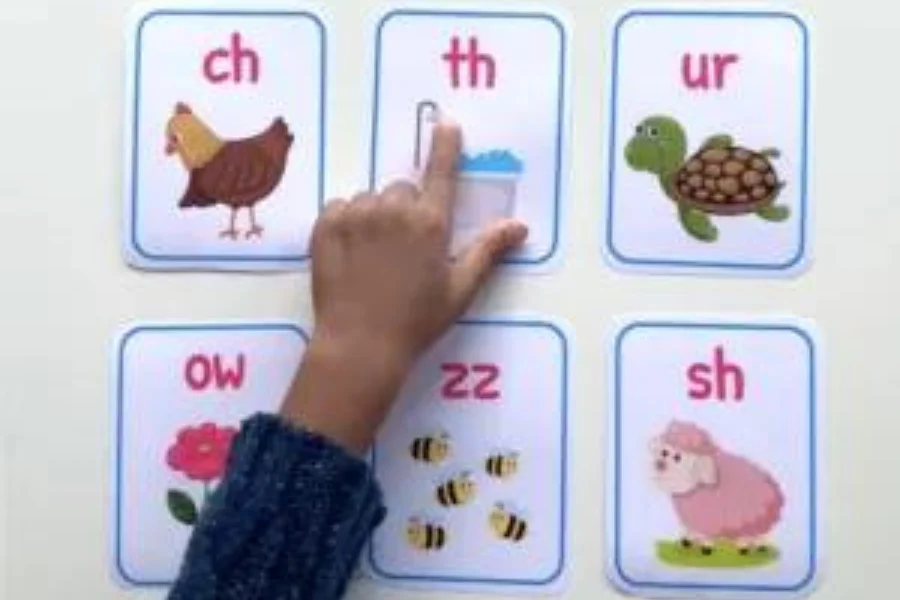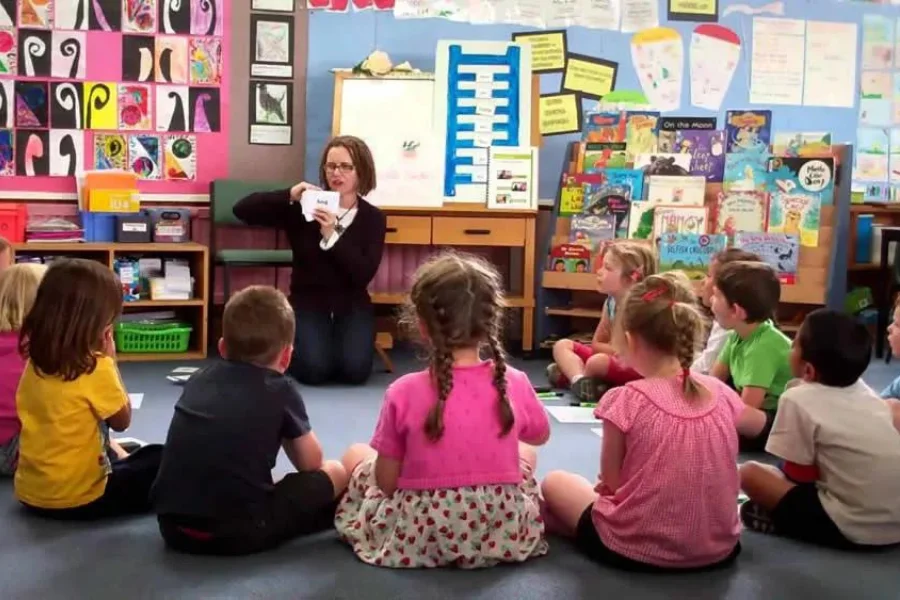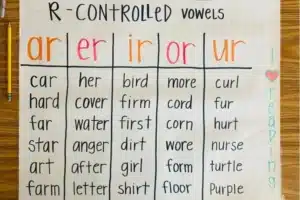
Source: toodlerjunction
Understanding Phonics Tricky Words is essential for anyone beginning their journey in learning English. These words, often challenging for early readers, defy the standard rules of phonics, making them a unique aspect of language learning. This blog aims to demystify Phonics Tricky Words, providing simple strategies and tips to master them effectively. With a focus on hands-on learning, we will discover different Phonics Tricky Words, making sure that readers gain confidence in their reading and writing abilities. This method is not just about remembering but about understanding the details that make English an interesting and dynamic language.
What are the Tricky Words in Phonics?
Tricky Words in Phonics are an interesting aspect of learning English. They are words that do not use the typical phonetic rules, making them exciting for students to decode using standard phonics methods. Knowing these Tricky Words in Phonics is important for increasing strong reading and writing abilities.
Defying Phonics Rules
Different from regular words, tricky words cannot be sounded out simply in phonics due to their non-phonetic spelling. They often have silent letters or sounds that differ from their spelling.
Examples
Words like said, they, and who are classic examples of Phonics Tricky Words. They cannot be decoded through regular phonics patterns.
Tricky Words in Phonics List
Tricky Words in Phonics List includes words that don’t follow the usual rules of phonics and are often a hurdle in early literacy. This makes it exciting for students to decode using the usual sound-to-letter communications. Considering Tricky Words in Phonics List is important in increasing reading fluency and writing.

Source: parenting
Phonics Tricky Words Activities
Tricky Words in Phonics Activities are crucial in any language learning curriculum, specifically for young children. These activities are designed to help students understand words that don’t follow the common phonetic rules, making them ‘tricky’ to understand.
Here, we’ll explore 10 engaging Tricky Words in Phonics Activities, each designed to increase understanding and holding of these unique words:
Flashcard Fun
Create flashcards with tricky words and their meanings. Show these cards to students, and ask them to say the word out loud. For example, flashcards for words like ‘said’ and ‘they.’
Memory Matching Game
Develop a game where students match tricky words with their meanings or with pictures illustrating them. It’s a playful way to reinforce their understanding.
Bingo with Tricky Words
Create bingo sheets filled with Tricky Words in Phonics. Students mark the words that you call out. This activity is a favorite for its fun and competitive edge.
Fill-in-the-Blanks
Prepare sentences with missing Tricky Words in Phonics. Examine children to fill in the blanks with the right word. For instance, She ___ (said) she would come.
Word Hunt
In this Phonics Tricky Words Activity, students search for tricky words in a paragraph or story. This not only helps in word recognition but also in understanding context.
Story Creation
Encourage students to write short stories using a list of tricky words. This activity aids in creative use and a deeper understanding of these words.
Word Sorting
Have students sort words into Phonics Tricky Words and regular phonetic words. This reinforces the difference between regular and tricky words.
Tricky Word Jigsaw
Create jigsaw puzzles with tricky words. Each correctly assembled word helps reinforce spelling and recognition.
Role-play Reading
Students can perform a skit using scripts that contain Phonics Tricky Words. This method helps in memorizing through action and speech.
Tricky Word Art
Students draw or paint a picture and incorporate tricky words into their artwork. This creative approach makes learning enjoyable and memorable.
Incorporating these Phonics Tricky Words Activities into your teaching method can greatly enhance the learning experience. They not only make the process of learning Phonics Tricky Words more enjoyable but also more effective.

Source: wordunited
Tricky Words Sentences
Tricky Words Sentences are an important part of learning English, specifically when it comes to Phonics Tricky Words. These words usually test students as they don’t use the standard phonics rules, making reading and spelling a bit more complex. Knowing and using these Phonics Tricky Words in sentences is important for effective communication.
Let’s explore examples of Tricky word sentences, each demonstrating the unique usage of a phonics tricky word.
Word: Enough
Sentence
She had enough apples to make a large pie.
Explanation
‘Enough’ defies typical phonetic pronunciation, making it a classic phonics tricky word.
Word: Friend
Sentence
My best friend stays just around the corner.
Explanation
The ‘ie’ in ‘friend’ is pronounced as /ɛ/, which is uncommon in English phonics rules.
Word: Said
Sentence
I would be late at night. he said
Explanation
‘Said’ is pronounced as /sɛd/, not as /saɪd/, different from what students may know from its spelling.
Word: Does
Sentence
Does she know the way to the park?
Explanation
‘Does’ is pronounced as /dʌz/, which is unexpected based on its spelling.
Word: Island
Sentence
We spent our vacation on a remote island.
Explanation
The ‘s’ in ‘island’ is silent, a tricky aspect for learners.
Word: Knock
Sentence
Please knock on the door before entering.
Explanation
The ‘k’ in ‘knock’ is silent, making it a phonics tricky word.
Word: Hour
Sentence
It takes an hour to drive to the city.
Explanation
‘Hour’ starts with a silent ‘h’, which can confuse phonics learners.
Word: Write
Sentence
Write your name on the top of the sheet Please.
Explanation
The ‘w’ in ‘write’ is silent, and the ‘ite’ is not phonetically natural.
Word: Two
Sentence
She bought two tickets to the show.
Explanation
‘Two’ is pronounced as /tuː/, with a silent ‘w’, a common issue in Phonics Tricky Words.
Word: Laugh
Sentence
The teacher always makes the children laugh.
Explanation
The ‘augh’ in ‘laugh’ is pronounced as /æf/, which disobeys the phonetic rule.
Mastering these words is a key to fluency in English, and with constant practice, learners can easily overcome the challenges they present. Remember, mastering Phonics Tricky Words is a significant step in becoming proficient in English.

Source: youtube
Why are Tricky Words Important?
Knowing why tricky words are significant in phonics is a key step in learning the English language. Phonics Tricky Words, usually exciting for students, play an important role in reading and writing.
Here’s Why are Tricky Words Important:
Bridging Gaps in Phonics Rules
Phonics Tricky Words don’t use the typical phonics rules. Learning them helps link the gaps that these irregularities create in the phonetic system, making sure of a more complete knowledge of English phonics.
Enhancing Reading Fluency
Knowing Phonics Tricky Words fast and exactly is important for reading fluency. As these words frequently appear in text, mastering them can significantly speed up reading and aid in smoother comprehension.
Boosting Confidence
When learners understand why tricky words are important and master them, it boosts their confidence. This confidence, in turn, increases their complete learning experience in phonics and language achievement.
Including Phonics Tricky Words into learning is not just about remembering exceptions; it’s about knowing the details of English phonics. Understanding the significance of tricky words in phonics paves the way for a more complete and effective method of language learning. By focusing on why tricky words are essential, teachers and students together can approach phonics with the consideration that these words are not just obstacles, but useful building blocks in learning the language.
Why Tricky Words is Difficult for Children to Read and Spell?
Phonics Tricky Words usually pose an important challenge for children in their first reading and spelling journey. Knowing why these words are hard for children to read and spell is important in talking about their learning needs effectively.
The following explains Why Tricky Words is Difficult for Children to Read and Spell:
Irregular Patterns
Unlike regular words that follow phonetic rules, Phonics Tricky Words often break these rules. This irregularity can confuse children who are just starting to understand the basic phonics principles.
Memory-Based Learning
Phonics Tricky Words require a different approach. Instead of decoding, children must memorize them, which can be daunting and less intuitive than sounding out words phonetically.
Limited Contextual Clues
In many cases, Phonics Tricky Words do not provide enough contextual clues. Children cannot rely on the context of a sentence to decipher these words, making them harder to read and understand.
Frequency in Language
These words are often used in the English language, making it vital for children to learn them. However, their high frequency also means that children meet these difficulties regularly, which can be overwhelming.
Visual and Auditory Similarities
Many Phonics Tricky Words have close visual or auditory resemblances to other words, leading to confusion. Children may mix up these words, affecting their reading fluency and spelling perfection.
Knowing the unique challenges Phonics Tricky Words given to children is the first step in helping them overcome these problems. With the right tactics and support, children can successfully know the difficulties of these words, paving the way for a more confident and capable reading and spelling voyage.
Phonics Course for Teachers
The Phonics Course for Teachers provided by Vidhyanidhi Education Society (Govt. regd.) stands out as a life-changing educational experience for teachers motivated to learn the art of teaching phonics. This course is precisely designed to prepare teachers with the abilities necessary to efficiently tell the details of Phonics Tricky Words and sounds.
18 Hours of Intensive Training
The Phonics Course for Teachers is an 18-hour intensive program that ensures a deep and thorough knowledge of phonics. This duration is perfectly adjusted to cover all features of phonics education without overwhelming the members. The focused nature of the training makes sure that each hour is filled with valuable learning experiences, making it a highly effective way to learn.
UK-based Synthetic Phonics Teaching Methodology
The course is inspired by the popular UK-based Synthetic Phonics Teaching and Learning Methodology. This approach is globally recognized for its effectiveness in teaching Phonics Tricky Words and is considered a gold standard in phonics education. By aligning with this methodology, the course ensures that teachers are learning techniques that are both contemporary and proven.
Audio-Visual Teaching Aids
Teachers are developed through the use of audio-visual teaching aids. This addition of technology makes the learning process more exciting and real, specifically when dealing with the details of Phonics Tricky Words. Audio-visual helps in better holding of concepts and enables a more interactive learning environment.
Demonstration with Jingles, Stories, and Actions
The course creatively employs jingles, stories, and actions for the demonstration of sounds. This approach not only makes the learning process fun but also aids in the easier understanding and memorization of Phonics Tricky Words. These methods cater to various learning styles, ensuring that all participants can benefit.
Practice 42 Sounds
A thorough exercise of all 42 sounds, including letter sounds and digraphs, is an important part of the Phonics Course for Teachers. This thorough practice makes sure that teachers are well-equipped to solve all the common and uncommon Phonics Tricky Words that they may encounter in their teaching careers.
Mock-drills
The course includes practical mock drills, providing teachers with hands-on experience in teaching phonics. These drills are invaluable in helping teachers gain confidence and expertise in handling a classroom setting while teaching Phonics Tricky Words.
Doubt-Solving and Question-Answer Sessions
To ensure clarity and comprehension, the Phonics Course for Teachers incorporates regular doubt-solving and question-answer sessions. These sessions are useful in talking about individual problems and making sure that each member completely understands the course content, specifically when it comes to the difficulties of Phonics Tricky Words.
The Phonics Course for Teachers offered by Vidhyanidhi Education Society (Govt. regd.) is a comprehensive program covering all aspects of phonics teaching. It’s an excellent choice for teachers desiring to increase their skills in teaching Phonics Tricky Words, using old-style and innovative teaching methods. This course is not just an educational journey but a stepping stone towards becoming a capable and talented phonics teacher.
Join Vidhyanidhi’s Phonics Course now – transform your teaching journey today!
To join the Phonics Teacher Training Course, contact +919869866277 / +919869546913.
Download the brochure of the Grammar Teacher Training Course from here!
FAQs
How do one can become a Certified Phonics Teacher?
Acquire knowledge and experience and become a Certified Phonics Teacher with the phonics teacher training course from Vidhyanidhi Education Society (Govt. regd.).
Which is the Best Institute for Phonics Teacher Training Course?
The best institute for Phonics Teacher Training like VES; seek accredited programs known for comprehensive, hands-on training.
What is the duration to be a Phonics Teacher?
Becoming a Phonics Teacher usually takes a week to a month, depending on the course strength and your previous experience.



